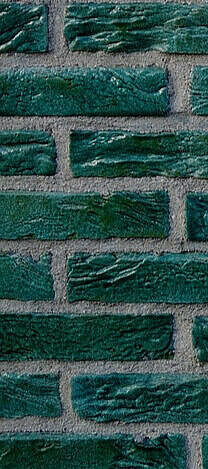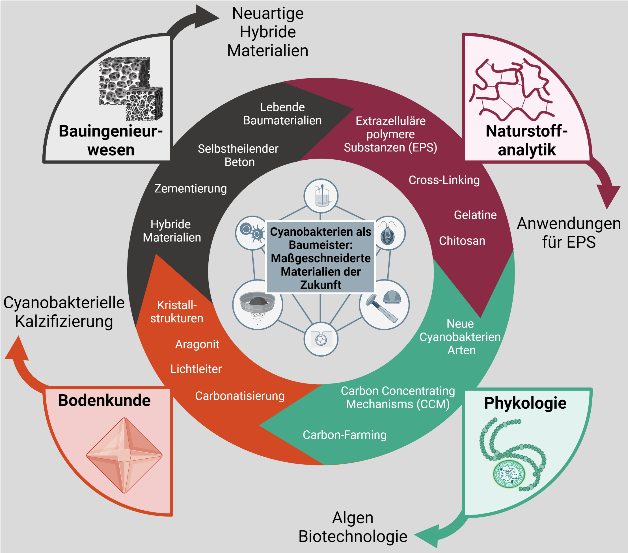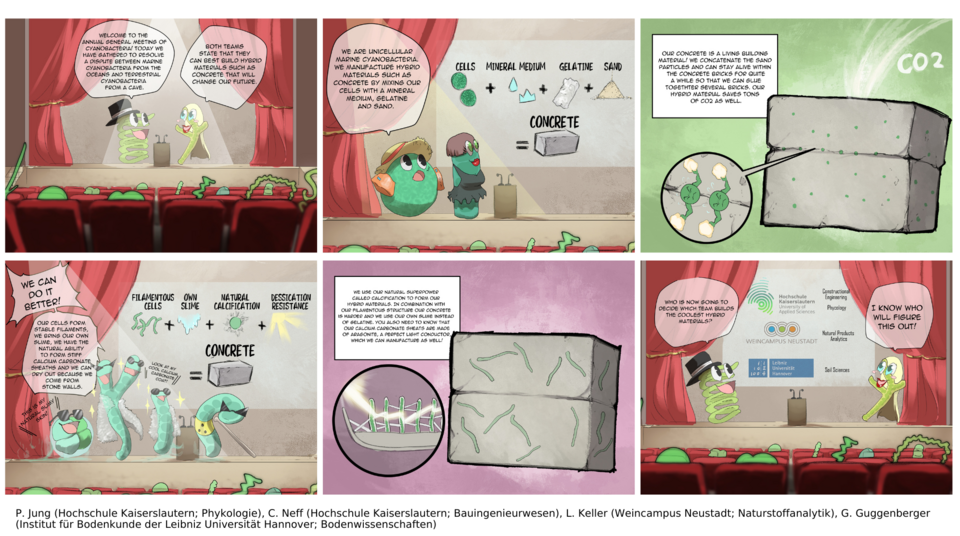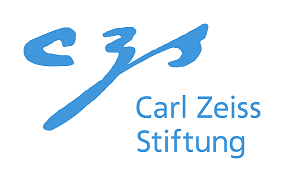Background and project objective
The use of carbonating cyanobacteria in biotechnological applications offers an alternative to the conventional use of heterotrophic bacteria under the pressure of climate change and the transformation of industry towards more sustainability and circularity. Thanks to their photosynthetic properties, cyanobacteria can be scaled up in a resource-saving manner, bindCO2 and produce a variety of substances that are of particular value. A few cyanobacteria form calcium carbonate (CaCO3)-containing, solid, crystalline shell structures, which have great potential for the production of hybrid materials such as light-conducting coatings or living, concrete-like building materials. Biological cementation by CaCO3 precipitates is enhanced by bonding with extracellular polymeric substances (EPS) of cyanobacteria. The combination of biological cementation and bonding thus offers unique opportunities to give hybrid materials and building materials new and, depending on requirements, customized properties. The present project aims to use cyanobacterial species to investigate both basic processes of cyanobacterial calcification and to use them to produce novel hybrid materials, such as (i) production of a concrete-like, living building material with a positiveCO2 footprint (carbon capturing) and (ii) light-conducting coatings that make solar cells, for example, more efficient.
In a preliminary study, such a reinforced, living building material has already been created, which is to be brought further into function. Important aspects (cementation, bonding, light conduction, self-healing, ductility) of the hybrid materials are to be substituted with a view to optimization and the adjustment of tailored properties. This is accompanied by experimental approaches to optimize the living conditions of the cyanobacteria to maintain the function of the hybrid materials. Due to the complexity of the content and the high degree of innovation, it is necessary to work in a highly interdisciplinary team that combines the fields of phycology, soil chemistry/mineralogy, polymer science and civil engineering in order to ultimately implement cyanobacterial calcification as a new process in biotechnology.
Promotion
The project "Cyanobacteria as master builders" is funded by the Carl Zeiss Foundation and is a cooperation project between Kaiserslautern University of Applied Sciences (Dr. Patrick Jung, Prof. Dr. Carina Lang) and Leibniz Universität Hannover (Prof. Dr. Georg Guggenberger, Dr. Stefan Dultz).
Contact person
Contact us now!
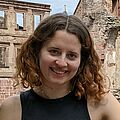
Julia Hale

Prof. Dr. Lena Keller

